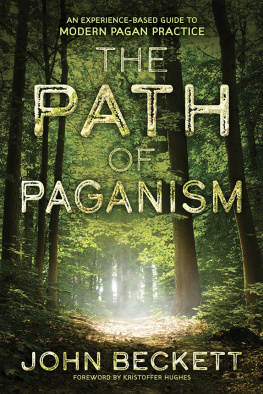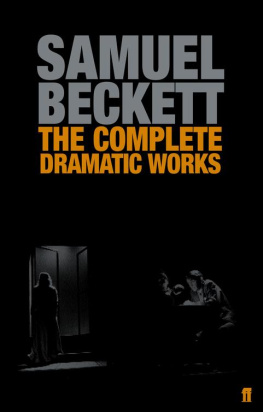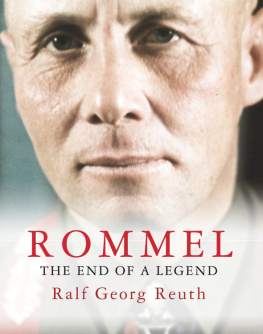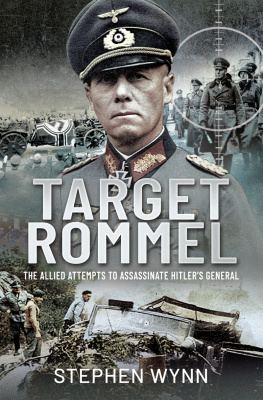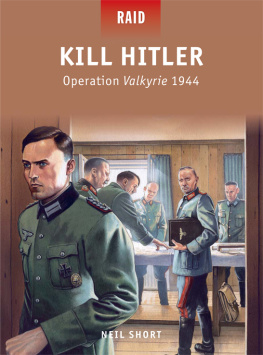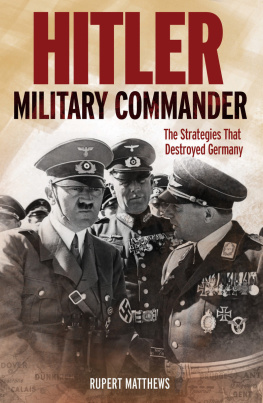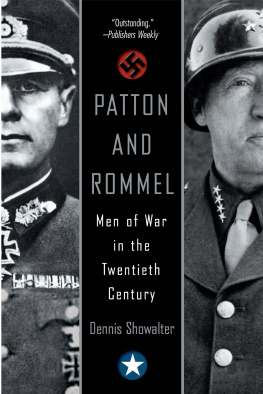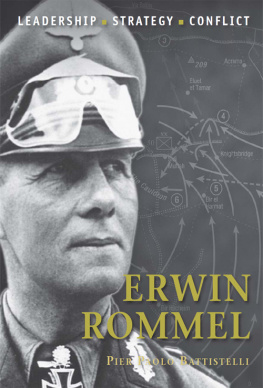

First published in Great Britain in 2013 by
Pen & Sword Military
an imprint of
Pen & Sword Books Ltd
47 Church Street
Barnsley
South Yorkshire
S70 2AS
Copyright Ian F.W. Beckett and contributors, 2013
ISBN 978 1 78159 359 2
eISBN 9781473831728
The right of Ian F.W. Beckett and contributors to be identified as the authors of this work has been asserted by them in accordance with the Copyright, Designs and Patents Act 1988.
A CIP catalogue record for this book is available from the British Library.
All rights reserved. No part of this book may be reproduced or transmitted in any form or by any means, electronic or mechanical including photocopying, recording or by any information storage and retrieval system, without permission from the Publisher in writing.
Typeset in Ehrhardt by Chic Graphics
Printed and bound in England
by CPI Group (UK) Ltd, Croydon, CR0 4YY
Pen & Sword Books Ltd incorporates the imprints of Pen & Sword Aviation, Pen & Sword Maritime, Pen & Sword Military, Pen & Sword Family History, Wharncliffe Local History, Wharncliffe True Crime, Wharncliffe Transport, Pen & Sword Discovery, Pen & Sword Select, Pen & Sword Military Classics, Leo Cooper, Remember When, The Praetorian Press, Seaforth Publishing and Frontline Publishing.
For a complete list of Pen & Sword titles please contact
PEN & SWORD BOOKS LIMITED
47 Church Street, Barnsley, South Yorkshire, S70 2AS, England
E-mail: enquiries@pen-and-sword.co.uk
Website: www.pen-and-sword.co.uk
Contents
List of Contributors
Dr NIALL BARR is Senior Lecturer in Defence Studies at the Defence Studies Department, Kings College, London, based at the Joint Services Command and Staff College, Watchfield. He has published widely on British military history including (with J.P. Harris), Amiens to the Armistice (Brasseys, 1998); Pendulum of War: The Three Battles of El Alamein (Cape, 2004) and The Lion and the Poppy: British Veterans, Politics and Society 19211939 (Praeger, 2005).
Professor IAN BECKETT is Professor of Military History at the University of Kent. A Fellow of the Royal Historical Society, he is also Chairman of the Council of the Army Records Society. He has published widely on the First World War, British auxiliary forces, and the late Victorian Army. His most recent book is The Making of the First World War (Yale University Press, 2012).
Professor MARK CONNELLY is Professor of Modern British Military History at the University of Kent. He has published on both world wars, and on war and the media including Steady the Buffs! A Regiment, A Region and the Great War (Oxford University Press, 2006), We Can Take It: Britain and the Memory of the Second World War (Pearson/Longman, 2004) and, most recently (with Tim Bowman) The Edwardian Army (Oxford University Press, 2012).
Dr RUSSELL A. HART is Associate Professor of History and Chair of the Department of History at Hawaii Pacific University, Honolulu. He has published widely on the Second World War, including Clash of Arms: How the Allies Won in Normandy (Lynne Rienner, 2001), and Guderian: Panzer Pioneer or Mythmaker? (Potomac, 2006).
Dr PETER LIEB is Senior Lecturer in War Studies at the Royal Military Academy, Sandhurst. He has particular interests in the German Army on the Eastern Front in both world wars. His publications include Konventioneller Krieg oder NSWeltanschauungskrieg? Kriegfhrung und Partisanenbekmpfung in Frankreich 1943/44 (Oldenbourg Verlag, 2007); and (with Christian Hartmann et al.) Der deutsche Krieg im Osten 19411944. Facetten einer Grenzberschreitung (Oldenbourg Verlag, 2009).
Dr ALARIC SEARLE is Reader in Military History and Director of the Centre for European Security at the University of Salford. A Fellow of the Royal Historical Society, he is also a member of the Executive Committee of the ArbeitskreisMilitrgeschichte , the leading scholarly military history society for German-speaking central Europe. As well as numerous journal articles and contributions to edited works, he is the author of Wehrmacht Generals, West German Society, and the Debate on Rearmament, 19491959 (Praeger, 2003).
Dr CLAUS TELP is Senior Lecturer in War Studies at the Royal Military Academy, Sandhurst. He has interests in eighteenth-century warfare as well as the Second World War. He is the author of The Evolution of Operational Art from Frederick the Great to Napoleon, 17401813 (Cass, 2005), and the commemorative booklet, The Advance from the Seine to Antwerp (MOD, 2005).
Introduction
Ian F.W. Beckett
Seventy years after the second battle of Alamein, the name of Erwin Rommel is still recognized in a Britain in which the popular knowledge of the events and personalities of the Second World War has steadily decreased among younger generations. Our friend Rommel, as the British commander-in-chief in the Middle East, Sir Claude Auchinleck, characterized him on one occasion, continues to enjoy a substantial military reputation. While he achieved much with often scant resources through dint of charismatic leadership, Rommel was not the military genius popularly portrayed and could be utterly reckless. As one German historian put it on the occasion of the twenty-fifth anniversary of Alamein, compared to a consummate director of large-scale operations such as Erich von Manstein, Rommel was just a commander with an impressive manner and a capacity to carry his troops with him by dramatic personal example.
In part, of course, much of Rommels reputation also rests on the manner of his death, compelled to take poison on 14 October 1944 after being implicated in the unsuccessful 20 July 1944 bomb plot against Hitler. It elevated Rommel as a suitable model of soldierly honour for the reformed West German Bundeswehr after 1955, when those directly involved in the conspiracy were less satisfactory exemplars of military virtues in having attempted to kill their commander-in-chief. Paradoxically, Rommels rise to higher command had been eased by his close identification with the Nazis. Cinema, too, added to Rommels laurels with his sympathetic portrayal by James Mason in The Desert Fox in 1951, contrasting markedly with his wartime portrayal by Erich von Stroheim as a stock Nazi villain in Five Graves to Cairo in 1943.
Not surprisingly, Rommel has been the subject of many biographers with varying perspectives, beginning with the generally laudatory Rommel by Desmond Young in 1950, through to the more critical recent works by German authors, such as Maurice Remys Mythos Rommel in 2002, and Ralf Georg Reuths Rommel: Das End eeiner Legende in 2004. In part, they reflect the increasing amount of material that has become available to historians unearthing the story of an intriguing and complex figure worthy of deeper analysis. Accordingly, the essays in this volume seek to illuminate the real Rommel and his place in history.
Born in Heidenheim in Wrttemberg on 15 November 1891, Rommel was the son of a Swabian schoolmaster who died in 1913. Wrttemberg was one of the four constituent kingdoms of Imperial Germany with Bavaria, Saxony and Prussia. Technically, there was no single unified German Army until the creation of the Reichsheer in 1919 and, on 19 July 1910, Rommel joined the 124th Wrttemberg Infantry Regiment as a cadet. Passing on to the Imperial War School in Danzig in November 1911, he was commissioned as Second Lieutenant in the 124th Infantry Regiment in January 1912. Briefly posted to a field artillery regiment between March and July 1914, Rommel was back with his Wrttemberg unit when war broke out in August 1914. Initially serving in the Argonne, Rommel was badly wounded in the left thigh on 24 September 1914, being decorated with the Iron Cross (2nd Class). He returned to regimental duty in January 1915, being awarded the Iron Cross (1st Class) for a successful trench raid later that month. Promoted first lieutenant, Rommel joined the Wrttemberg Gebirgsbataillon (Mountain Battalion) at the end of September 1915 under the command of Major Theodore Sproesser. The Germany army was noted for its tactical innovation during the course of the war as a whole and, as suggested by its title, the Mountain Battalion was intended for specialist duties as a larger than usual battalion with its own integrated machine-gun companies, various detachments being capable of fighting as battle groups separated from the battalion as necessity dictated.
Next page


